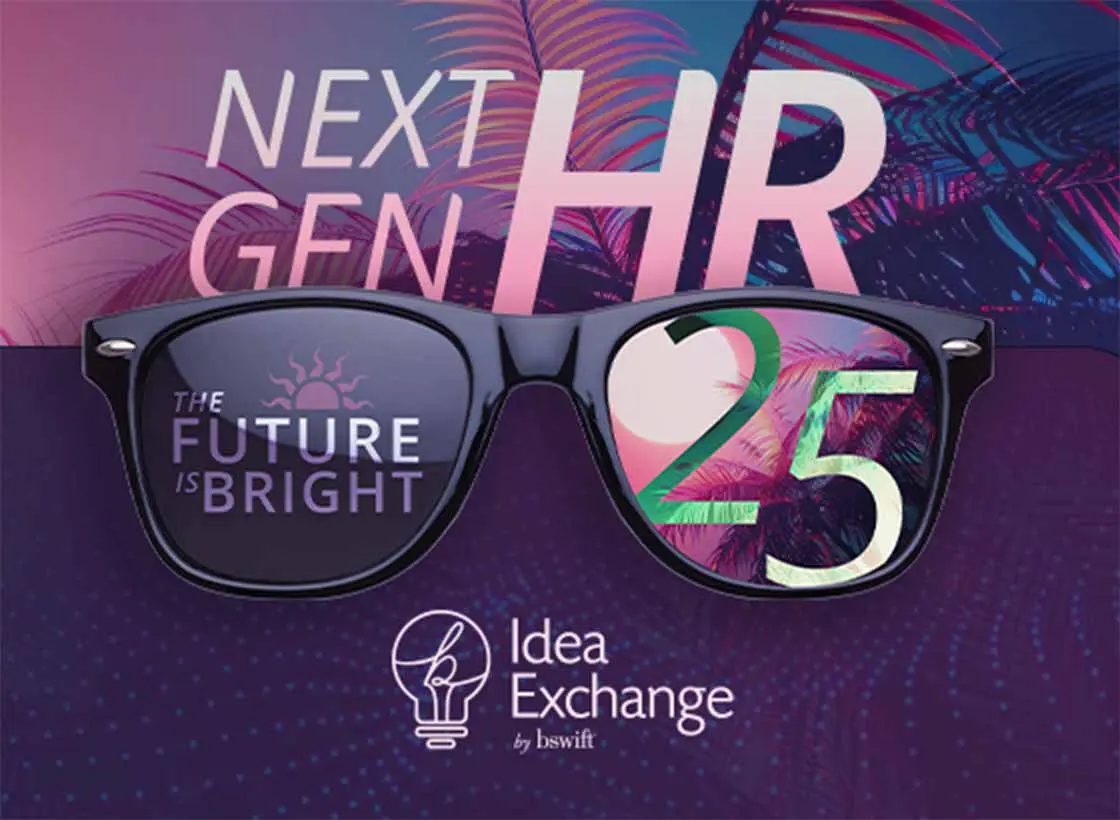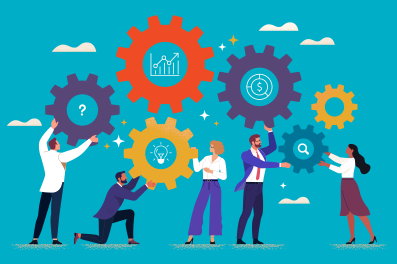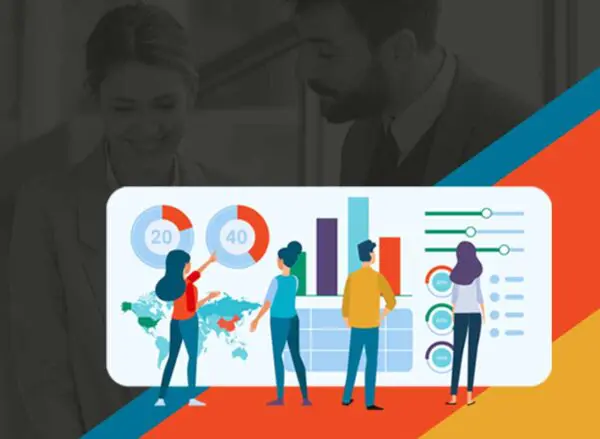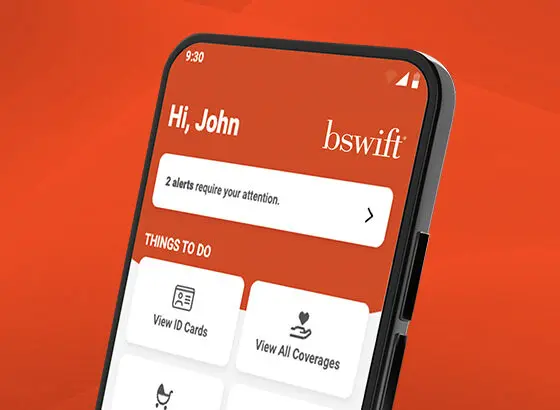Insights from top industry executives on personalization, employee outcomes, and the role of AI in benefits engagement
At Idea Exchange 2025, bswift’s annual client and partner event, a panel of industry executives came together to discuss the changing shape of employee wellbeing.
Moderated by Kim Evans, Vice President of Partner Ecosystem at bswift, the conversation featured:
- Matt Marek, President, Inspira Financial
- Bill Gianoukos, CEO, Goodpath
- Rachel Stillman, Chief of Staff, Transcarent
Together, they made a compelling case: Wellbeing needs a reboot. The discussion surfaced the need for a broader, human-first approach to wellbeing, one that includes mental health, personal purpose, and financial resilience.
Their shared view: The next wave of benefits must be integrated, intelligent, and deeply personal.
1. Wellbeing is now a bottom-line issue
Marek got right to the point: “Burnout isn’t just a wellness problem. It’s a productivity problem.”
In a labor market defined by turnover, disengagement, and rising healthcare costs, the old split between business goals and employee wellbeing is breaking down. Employers aren’t just being asked to care. They’re being asked to prove it.
And the data backs it up. According to Gallup, workers who are “thriving” in overall wellbeing are 32% more likely to stay with their employer and report 41% lower absenteeism compared to those who are “struggling” or “suffering.”
The takeaway: Wellbeing isn’t just a perk. It’s a performance strategy.
2. Generative AI is reshaping healthcare engagement
Rachel Stillman spotlighted the rising role of generative AI in healthcare navigation. Today, many employees start their care journey on Google, which is neither personalized nor benefit-aware.
“We’re seeing how generative AI can change that,” she said.
By integrating plan details, PHI safeguards, and smart triage, AI tools can now guide employees to care that’s high-quality, cost-effective, and actually covered. It’s a major step forward in both user experience and benefit utilization.
And the need is real. A recent poll from the PAN Foundation found that 72% of insured adults are not confident in navigating their healthcare plans. That lack of confidence isn’t just frustrating—it’s a barrier to care.
The takeaway: Generative AI offers a clearer path. By making complex benefits more accessible and personalized, it can help employees make smarter, faster, better-informed choices.
3. More programs ≠ better outcomes
The panel reached consensus on a hard truth: Most employers already offer enough.
“The issue isn’t lack of tools,” said Bill Gianoukos. “It’s lack of clarity and trust.” Too often, employees don’t know what’s available, don’t understand how to access it, or simply don’t believe it will help.
A 2024 survey by the National Alliance on Mental Illness (NAMI) found that 25% of workers are unaware whether their employers offer basic mental health resources like EAPs, sick days, or flexible work options.
Poor communication is a big part of the problem. According to the 2025 MetLife Employee Benefit Trends Study, 38% of employees say they struggle to understand their company’s benefits communications, up 6% from 2024.
The takeaway: Rather than adding more, employers should focus on simplifying access, streamlining communication, and rebuilding confidence.
4. Personalization isn’t optional anymore
“If you’re emailing me about gym discounts right after I’ve had a baby, you’ve already lost me,” said Marek, summarizing the panel’s consensus.
Relevance matters. Benefits need to be timely, contextual, and human. Personalization doesn’t just mean targeting—it means knowing where someone is in life and speaking directly to that moment.
And employees agree. The 2025 MetLife Employee Benefit Trends Study found that 75% of them say they want a benefits platform that offers personalized decision support, with Gen Z even higher at 81%.
The takeaway: Relevance is the new ROI. If it doesn’t resonate, it doesn’t register.
5. Measurement must evolve
“Enrollment isn’t engagement,” said Stillman. Sign-ups are easy to report but reveal little about real impact. That’s why more employers are turning to deeper metrics to understand whether their programs are working.
These include:
- Utilization rates: Are employees actually using the tools available? Tracking usage helps surface what’s being overlooked and where support may be falling short.
- Satisfaction surveys: Feedback on content, access, and overall experience can expose gaps and shape future improvements.
- Behavioral and health outcomes: Are people showing signs of improvement? Metrics like reduced absenteeism, increased preventive care, and reduced healthcare spend, offer a clearer view of long-term effectiveness.
There’s also a shift from narrow ROI to value on investment (VOI)—a broader lens that includes retention, engagement, and morale.
The takeaway: It’s not enough to count how many signed up. What matters is whether it’s truly changing lives.
Integration is the future
The panel closed with a call for less fragmentation and more cohesion. “We don’t need more platforms,” said Gianoukos. “We need better connections.”
The vision: One seamless, trustworthy, intelligent system that meets employees where they are—and actually helps them feel better.
Because in today’s workplace, wellbeing isn’t a perk. It’s the plan.

























